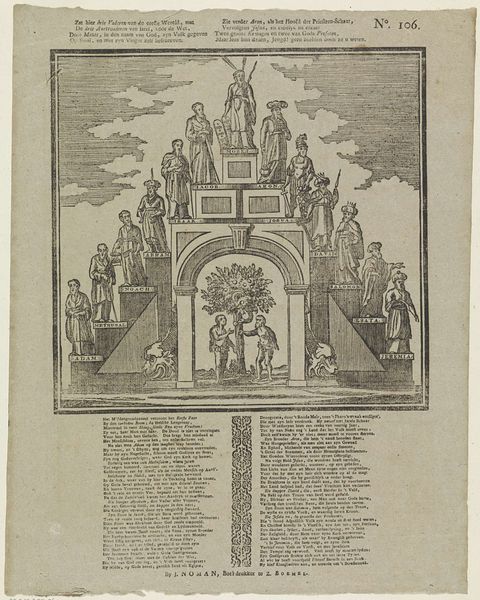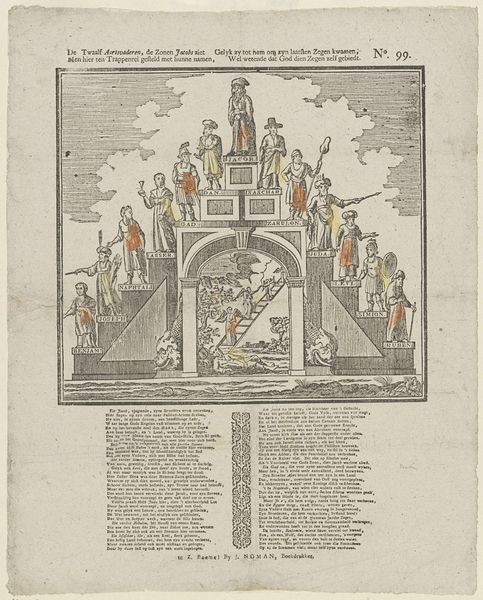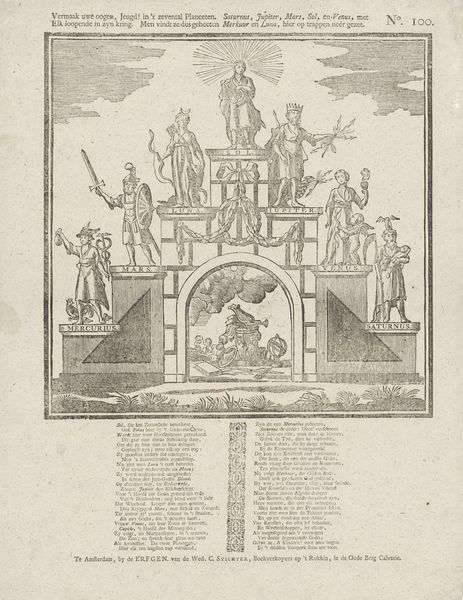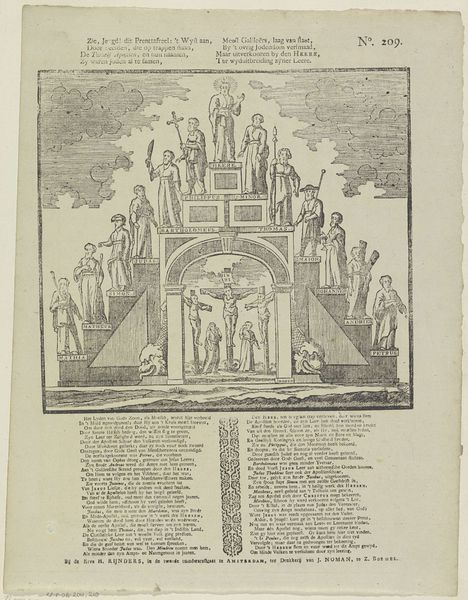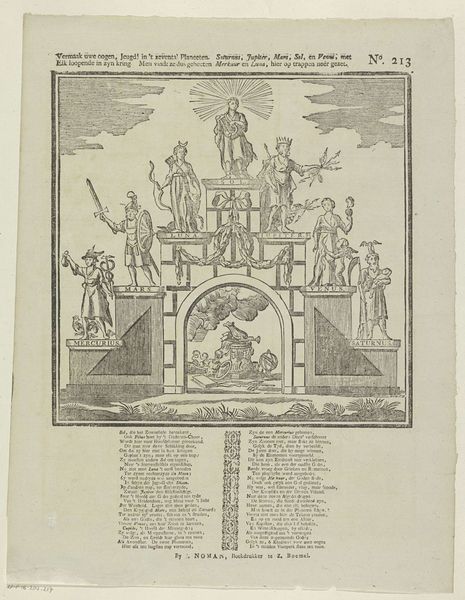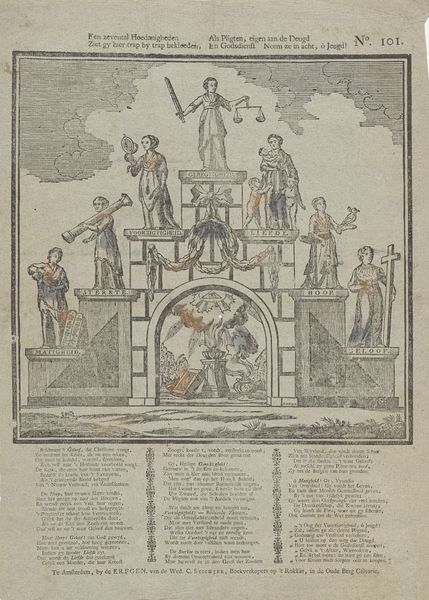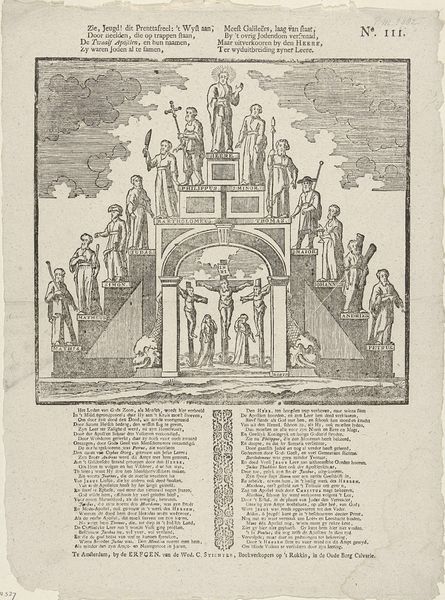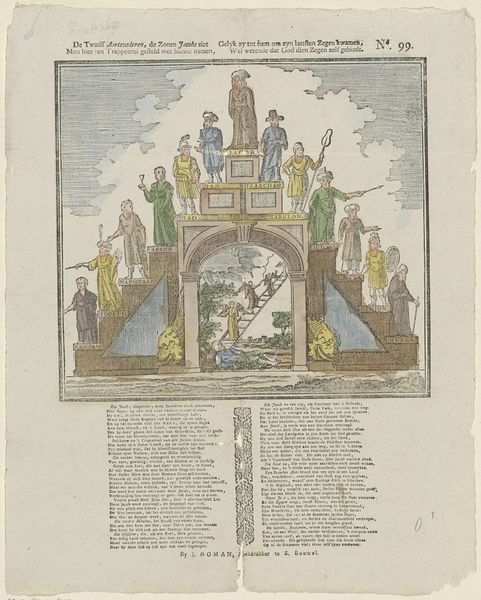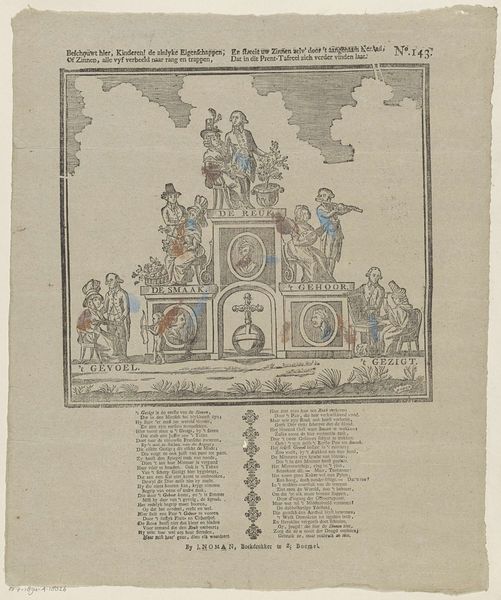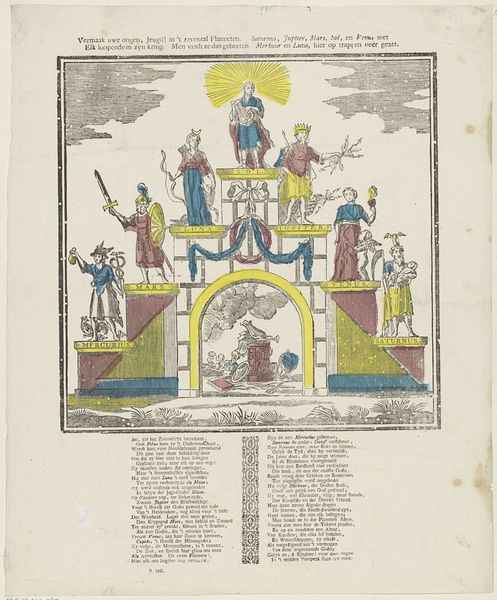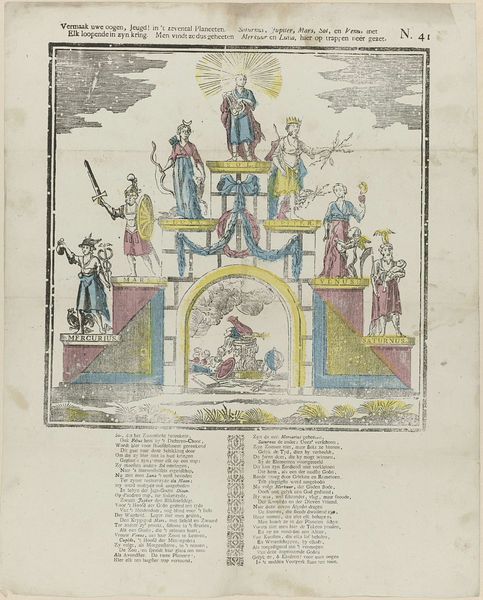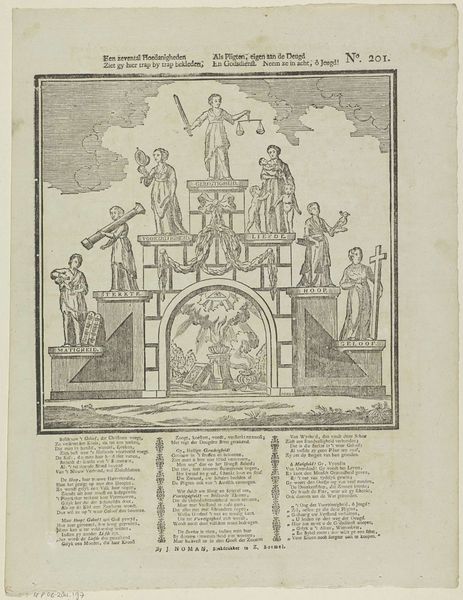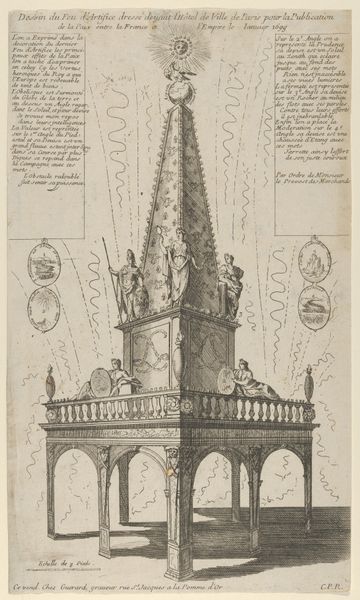![Zie hier drie vaderen van de eerste wereld, met / De drie aartsvaderen van Isrel, vóór de wet [(...)] by erven weduwe Cornelis Stichter](/_next/image?url=https%3A%2F%2Fd2w8kbdekdi1gv.cloudfront.net%2FeyJidWNrZXQiOiAiYXJ0ZXJhLWltYWdlcy1idWNrZXQiLCAia2V5IjogImFydHdvcmtzLzdjYTdhOTk2LTQzZTEtNDE3ZC1iODI2LTZhMzhlNmIyN2NlNC83Y2E3YTk5Ni00M2UxLTQxN2QtYjgyNi02YTM4ZTZiMjdjZTRfZnVsbC5qcGciLCAiZWRpdHMiOiB7InJlc2l6ZSI6IHsid2lkdGgiOiAxOTIwLCAiaGVpZ2h0IjogMTkyMCwgImZpdCI6ICJpbnNpZGUifX19&w=3840&q=75)
Zie hier drie vaderen van de eerste wereld, met / De drie aartsvaderen van Isrel, vóór de wet [(...)] 1715 - 1813
0:00
0:00
Dimensions: height 412 mm, width 335 mm
Copyright: Rijks Museum: Open Domain
Editor: This print, "Zie hier drie vaderen van de eerste wereld, met / De drie aartsvaderen van Isrel, vóór de wet [(...)]", dates somewhere between 1715 and 1813. It's an engraving. Looking at its organization, I’m struck by how its figures are arranged on platforms or stages, and it's not obvious why. What aspects of the structure or composition stand out to you? Curator: I observe that the linear perspective employed gives rise to a hierarchy; the figures on higher levels read as more significant. This elevation implies a deliberate ordering of importance, perhaps echoing the established social structures of the era. Notice the clear delineation of space. What do you make of this ordered space in relation to the figures within it? Editor: It’s interesting that you point that out. It looks less like real depth and more like stacked layers. Does that flatness affect how we perceive the figures and their relationships? Curator: Precisely! The flattening can emphasize the symbolic over the realistic. By diminishing the illusion of depth, the engraving shifts our attention to the surface and to the interplay of lines and shapes. It directs our attention towards the details of the forms rather than their spatial positioning. How does this abstraction influence your engagement with the narrative conveyed? Editor: I see. By focusing on the structure of the print, and noticing how the hierarchy is set up spatially, I hadn’t even considered the details of the narrative like I would normally do. Thanks for highlighting the construction! Curator: Considering artistic approach allows you to deconstruct and perceive meaning beyond the representational level. A renewed way of engaging with the subject is born.
Comments
No comments
Be the first to comment and join the conversation on the ultimate creative platform.
